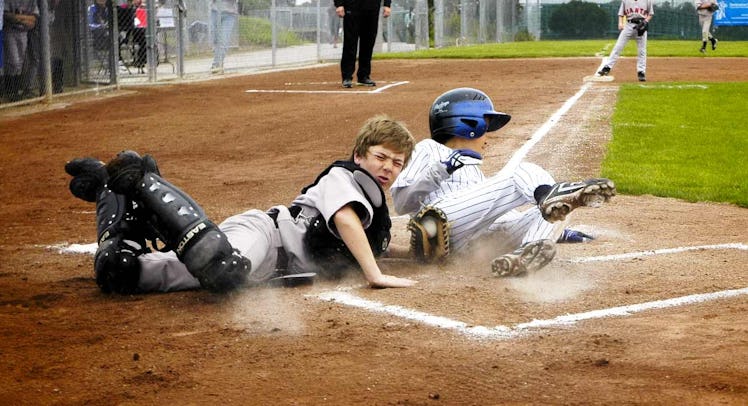Are Little League Chest Protectors Really Necessary?
They're intended to save players from a rare heart complication. But studies show they don't really work.

Baseball is currently experiencing the biggest trend in protective equipment since the athletic cup. Tucked under the jerseys of professionals and Little Leaguers alike is a plastic chest protector designed to defend their heart. As opposed to the full-length, often ribbed protectors worn by catchers, these are smaller and either buckle across a player’s chest or affix to a compression shirt; in both cases they’re meant to fight the occurence of commotio cordis, a rare disruption of the heart’s rhythm that results in cardiac arrest. Although rare, commotio cordis has killed 162 Americans since 1980, most of them boys under the age of 14 who were hit by a ball playing baseball or lacrosse.
Given the stakes, it’s easy to understand why parents and players would be quick to buckle up chest protectors. Sporting goods stores carry dozens of models, and the safety equipment is mandatory for youth ballplayers in 20 states. And while the under-shirt guards may lessen the impact of a hard grounder, a growing body of research suggests that they don’t do a damn thing to defend the heart.
Dr. Patrick Mularoni, Medical Director of Pediatric Sports Medicine at Johns Hopkins All Children’s Hospital, puts it frankly: “There has never, ever been a study that shows a decrease in commotio cordis in Little League players wearing a chest protector.”
In fact, research often shows the opposite. A 2013 study found that 37 percent of athletes who died from commotio cordis were wearing chest protectors at the time of their injuries. A 2006 experiment found that 12 different chest protectors did not prevent commotio cordis in juvenile pigs hit by 40 mph baseballs (as always, a tough day to be a swine.)
Now, no company claims that their chest protector will reduce the risk of commotio cordis. In fact, one of the most popular models, the Markwort Heart-Gard, doesn’t actually cover the heart– it rests on the sternum, about two inches to the right of the organ in question. When asked about the 2006 study, its inventor told the Chicago Tribune: “When pigs start playing baseball, I’ll start losing sleep over that. I didn’t design it to work on a pig.”
Despite past findings and outcry, the future looks bright for the chest protector industry. Kids don’t necessarily have a problem with the guards and they’re relatively inexpensive as far as sports equipment is concerned. Plus, Dr. Mularoni predicts that science will finally catch up with safety. expectations. He says that although current products are ineffective, some newer materials “have been found to decrease the occurrence of commotio cordis in animal models.” One of those new materials is a Kevlar-like polymer developed by Unequal Technologies, a sports company that integrates military research into athletic pads.
Chest protectors triumphed this January when the National Operating Committee on Standards for Athletic Equipment, (NOCSAE), which develops standards for youth sports leagues, declared that it will recommend the accessory for all young baseball players starting next year. In a bit of hopeful thinking, the NOCSAE’s standard calls for a product that reduces impact by 30-to-50 percent; no chest protector on the market today can do that.
All of this ambiguity aside, there’s a much more effective way to save the lives of players who get struck in the heart: the defibrillator. Dr. Mulroni calls it “the most important item to prevent death on a little league field” and says that “every Little League organization should include one in their budget.”
If used quickly and effectively, a defibrillator will resuscitate a player affected by commotio cordis. They’re not cheap, and volunteers need to be trained how to use them, but the heart-shocking machines offer a peace of mind no chest protector can achieve. This year, New York City is requiring all youth baseball teams to have one present during games, joining many leagues around the country who have had them on hand since the ’90s. For concerned parents, the tried-and-true power of a defibrillator makes the chest protector debate irrelevant.
This article was originally published on